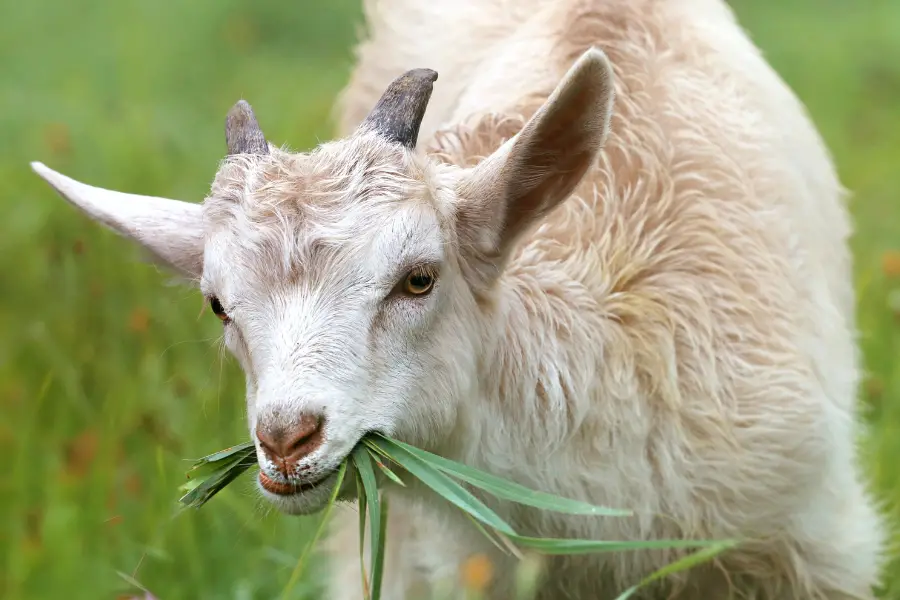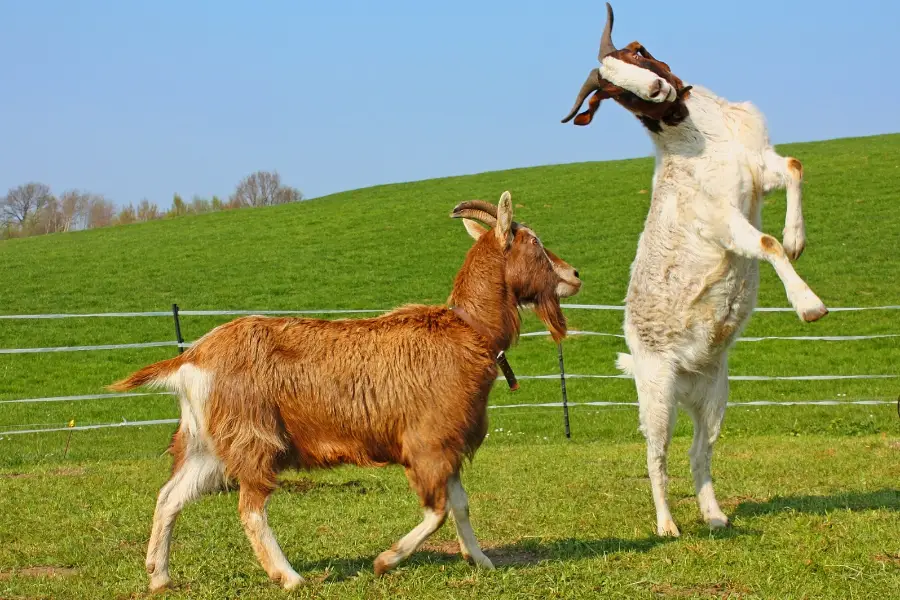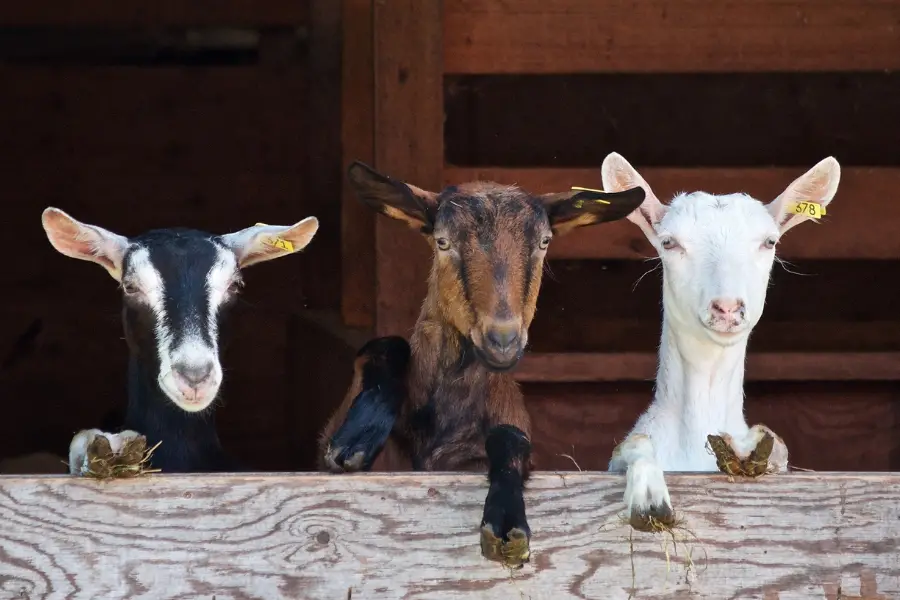
Spanish goats are known by many names in different parts of the United States, due to their long regional history scattered across North America, and their distinctive characteristics.
They are often called brush goats or scrub goats, wood goats, briar goats, and hill goats. As these names imply, these goats are hardy creatures that thrive in tough environments, foraging independently on difficult terrain.
Table of contents
- Spanish Goat Origin
- Spanish Goat Uses
- Spanish Goat Characteristics
- Breeding Spanish Goats
- Raising Spanish Goats: Pros & Cons
- Spanish goats care: Top tips
- Spanish goat associations: What are the major Spanish goat associations in the USA?
- Spanish Goat FAQs
- Video: Oklahoma State University – Meat Goats
- Are Spanish Goats Right For You?
They are frequently crossbred with other goats to impart vigor and toughness in their offspring. However, this extensive crossbreeding has led to reduced numbers of pure Spanish goats, and today the species is on the American Livestock Breeds Conservancy watch list.
Spanish Goat Origin
Spanish goats are a hardy breed of goats that have played a significant role in agricultural practices for many generations. They are primarily found in the southern United States, particularly in Texas, but their origins can be traced back to Spain.
Historical Background
Spanish goats were brought to the New World during the early explorations and colonization efforts of the Spanish Empire. When Spanish explorers and settlers arrived in the Americas, they brought with them a variety of livestock, including goats. These goats were well-adapted to the harsh and rugged terrain of the Iberian Peninsula and were ideally suited for survival in the new environment.
Significance and Distribution
Over time, Spanish goats spread throughout the Americas, primarily due to their adaptability and ability to survive in challenging environments. They were particularly well-suited for regions with arid or mountainous terrain, where other livestock struggled to find sustenance. Their presence became vital for many communities, as they provided a source of meat, milk, and fiber.
In the United States, Spanish goats gained popularity as an efficient and low-maintenance livestock option, especially in Texas and other southern states. Their hardiness, disease resistance, and foraging abilities made them an ideal choice for farmers and ranchers in these areas.
Conservation Efforts
Despite their historical significance and valuable traits, Spanish goats faced a decline in population due to changes in farming practices and the introduction of other goat breeds. However, in recent years, there has been a growing recognition of their value, and efforts have been made to conserve and preserve this breed.
Several organizations and breeders have focused on maintaining purebred Spanish goats and promoting their unique qualities. These conservation efforts aim to preserve genetic diversity and ensure the survival of this resilient breed for future generations.

Summary of Spanish Goat Origins
Spanish goats have a fascinating origin story that spans continents and centuries. Their adaptability, foraging abilities, and historical significance make them an important part of agricultural heritage in the Americas. As efforts continue to conserve and promote this breed, Spanish goats will continue to thrive and contribute to sustainable farming practices in various regions.
Spanish Goat Uses
Before widespread refrigeration in the 1950s, small goats were preferred for meat, because most households didn’t have the means to preserve excess meat and keep it fresh. The small udders help the does forage on rough terrain and navigate briar patches. In short, these goats are ideal low-maintenance animals which require little care or human intervention when feeding or kidding.
Today, many breeders prefer Spanish goats for meat. They are also kept on farms for brush clearing. Although they don’t give as much milk as other breeds, their versatility and ease of care make them a reliable goat to have on your farm. As one blogger puts it, “dead goats make no sales”. Some breeders love their year-round, high fat milk, but it can take a little effort to sufficiently tame a Spanish doe for consistent milking.
They are also very popular for brush-clearing and improving pasture for grazing animals, or simply to improve the landscape.
Spanish Goat Characteristics
Spanish goats are known for their adaptability and resilience. They have a compact, muscular build with a medium-sized frame. Their coats vary in color, ranging from solid black or brown to multi-colored patterns. They typically have short hair, which helps them cope with hot climates and resist common parasites.
One of the distinguishing characteristics of Spanish goats is their excellent foraging abilities. They are highly efficient browsers, capable of thriving on sparse vegetation and consuming a wide range of plants, including brush, weeds, and even toxic plants. This adaptability has made them valuable in controlling invasive plant species and managing vegetation in diverse landscapes
Breeding Spanish Goats
While a doe can come into heat as early as 5 months old, it is better to wait until she is at least 8 months old or 80 pounds to prevent kidding problems. When she is coming into heat, she will generally show signs with signature behaviors, such as:
When breeding Spanish goats, there are a few factors to consider:

The first Spanish goats arrived in the US in the early 1540s. They can be used for both meat and dairy production. Spanish goats are agile creatures that can easily adapt to almost any climate. They can weigh anywhere from 50 pounds to 200 pounds.
Raising Spanish Goats: Pros & Cons
Pros of Raising Spanish Goats
Adaptability
One of the biggest advantages of raising Spanish goats is their adaptability to various climates and terrains. These goats have developed resilience over centuries of living in harsh conditions, including arid and mountainous regions. They can tolerate both hot and cold climates and are capable of foraging for their own food in rugged landscapes. This adaptability makes them suitable for a wide range of farming systems.
Disease Resistance
Spanish goats are known for their natural resistance to diseases and parasites. This trait is a result of their long history of survival in challenging environments. Their hardiness and resistance to common goat illnesses can reduce the need for veterinary interventions and lower overall healthcare costs for goat owners.
Vegetation Management
Spanish goats are exceptional foragers and excel at controlling vegetation. They have a strong browsing instinct and prefer woody plants, brush, and weeds over grass. This makes them particularly useful for landowners who need to manage overgrown or brushy areas. By introducing Spanish goats to such areas, land can be cleared and maintained without the need for heavy machinery or harmful chemicals.
Meat Production
Another advantage of raising Spanish goats is their potential for meat production. Spanish goat meat is highly regarded for its flavor and tenderness. The animals are muscular and have a good meat-to-bone ratio, making them an attractive choice for farmers interested in producing high-quality goat meat for the market. Additionally, Spanish goats have a rapid growth rate, allowing for relatively quick turnaround times in meat production.
Low Input Requirements
Compared to some other livestock species, Spanish goats have relatively low input requirements. They are excellent foragers and can subsist on a diverse range of vegetation, which reduces the need for expensive feed supplementation. Additionally, Spanish goats are efficient converters of forage into meat, requiring less input to produce a pound of meat compared to larger livestock species like cattle. This can result in lower feed costs and a more sustainable farming operation.
Cons of Raising Spanish Goats

Limited Milk Production
While Spanish goats have many desirable traits, high milk production is not one of them. If you are primarily interested in goat milk production, other breeds such as the Nubian or Saanen may be more suitable choices. Spanish goats produce modest quantities of milk, which may not meet the demands of a commercial dairy operation. However, they can still provide enough milk for personal consumption or small-scale cheese and soap making.
Smaller Size
Spanish goats are generally smaller in size compared to some other goat breeds. While this can be an advantage in terms of lower feed requirements, it may limit their usefulness in certain farming systems. If you require larger goats for specific purposes such as pack animals or extensive meat production, other larger breeds might be more appropriate.
Market Demand and Recognition
Although the demand for goat meat has been growing in recent years, the market for Spanish goat meat may not be as established or widely recognized as that for other livestock. This can present challenges when it comes to finding buyers or establishing a profitable market for Spanish goat products. Farmers considering raising Spanish goats for meat should carefully research local market demand and potential outlets before starting their operation.
Spanish goats care: Top tips
- Like most goats, Spanish goats need companionship so that they don’t get lonely.
- Spanish goats need to be dewormed frequently. Take them to a vet that has experience in dealing with this breed.
- Spanish goats are exceptional climbers. You want to create a structure that’s tall and strong enough to keep your goat contained.
- This breed can handle their own in pretty much any weather condition. They only need shelter for really harsh weather.
Spanish goat associations: What are the major Spanish goat associations in the USA?
Spanish Goat FAQs
Spanish goats are both dairy and meat goats. They’re considered to be medium-sized compared to other breeds.
Purebred yearling does average $300 to $350, but because of the rarity of purebred stock crossbreeds may cost less.
Spanish goats are medium sized goats with a compact, muscular body. They come in a variety of coat colors and have short hair, enabling them to thrive in hot environments and withstand parasites.
Although they can reach up to 250 pounds, they average closer to 150 to 200 pounds.
Video: Oklahoma State University – Meat Goats
Justin McDaniel gives an excellent presentation on meat goats, and Spanish Goats are the first breed that he covers in the video.
Are Spanish Goats Right For You?
Raising Spanish goats can be a worthwhile endeavor for farmers and homesteaders looking for adaptable, disease-resistant, and efficient livestock. Their ability to thrive in diverse environments, natural resistance to diseases, vegetation management skills, and meat production potential are strong arguments in favor of choosing this breed. However, it’s important to consider factors such as limited milk production, smaller size, and market demand before making a final decision. By carefully weighing the pros and cons, you can determine whether Spanish goats are the right fit for your farming or homesteading goals.




